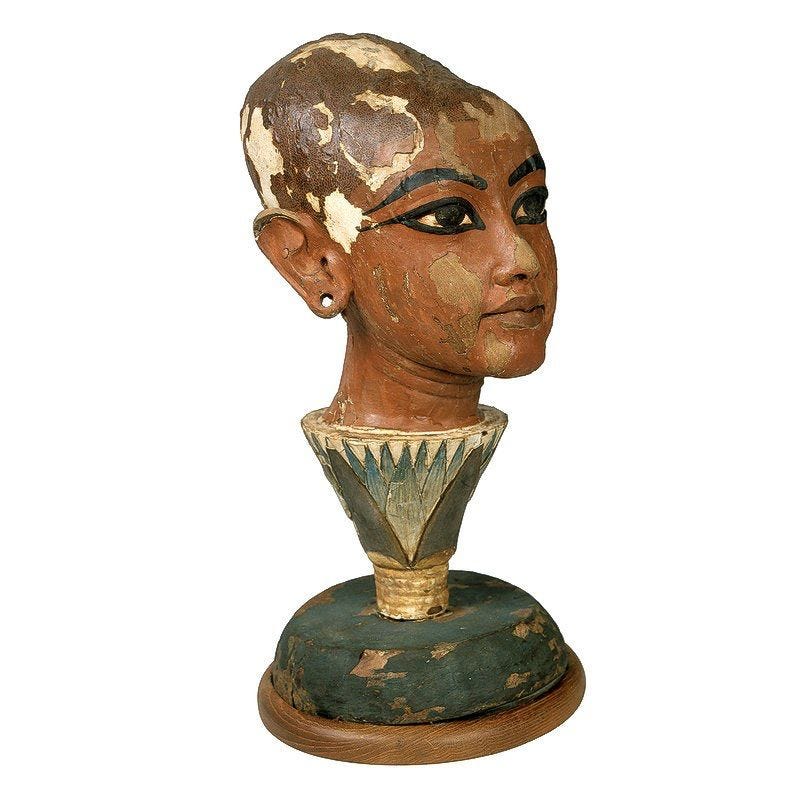Podcast Episode Details
Back to Podcast Episodes
Tutankhamun, Nefertem, and the Lotus of Rebirth
[Content Warning: This episode includes discussions of sexual themes(!), power(!!), and the exploitation of bodies(!!!).]
Join Kara Cooney and Amber Myers Wells for a deep dive into one of the most peculiar and beautiful objects from the tomb of Tutankhamun (we think!)—a painted wooden head emerging from a blue lotus. Was it meant to show the child god Nefertem? A cosmic birth scene? A sensual drug trip? Or all of the above? In this episode, we explore the sculpture’s religious symbolism, Amarna influences, sketchy findspot, and what it tells us about birth, rebirth, and the power of divine femininity. One object, endless meanings.
Don’t miss Kara’s companion post to this episode on Ancient/Now!
Show notes
Howard Carter’s object card (Griffith Institute)
References
Hawass, Zahi. 2007. The Head of Nefertem. In King Tutankhamun. The Treasures of The Tomb. Thames & Hudson, London 2007, p. 16.
Hoving, Thomas. 1980. Tutankhamun: The Untold Story. Rowman & Littlefield (reprint, 2002).
James, T. G. H. 2000. Tutankhamun. White Star: Metro Books.
Munro, Peter. 1980. "Tutanchamun als Sonnengott." In the exhibition catalogue Tutanchamun in Köln. von Zabern, Mainz, p. 140–141.
Schlögl, Hermann 1977. Der Sonnengott auf der Blüte: eine ägyptische Kosmogonie des Neuen Reiches. Aegyptiaca Helvetica 5. Genève: Éditions de Belles-Lettres.
Seton-Williams, M. V. 1980. Tutanchamun. Der Pharao. Das Grab. Der Goldschatz. Ebeling, Luxembourg, p. 120.
Get full access to Ancient/Now at ancientnow.substack.com/subscribe
Published on 1 month, 1 week ago